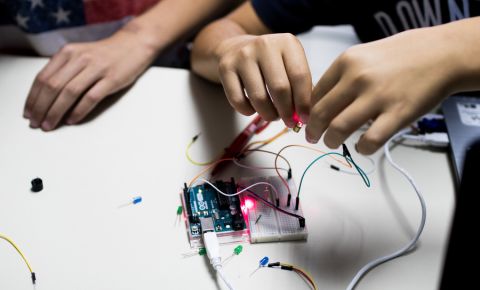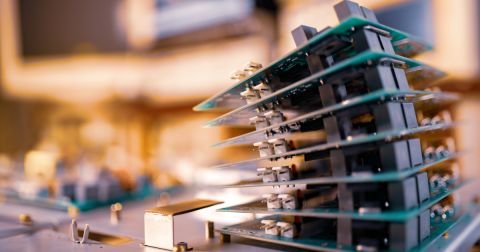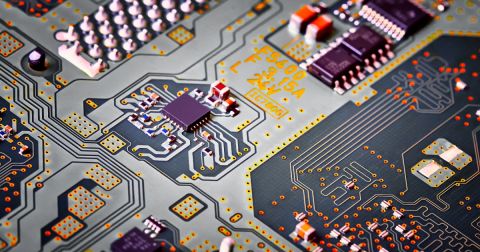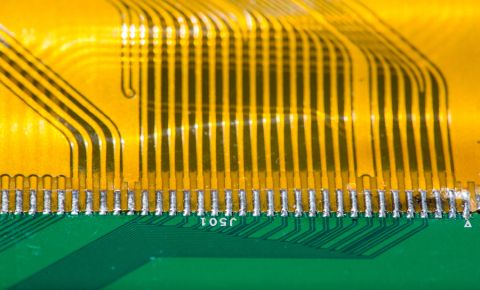Getting Started with Your First Electronics Projects in Upverter (previously Geppeto) Sofftware
Upverter (previously known as Geppetto) is an online platform that allows anybody with access to a modern browser to develop their newest development board and move on to low volume manufacturing. One of the challenges in launching your product, especially hardware products, is that it requires an array of skill sets and some reasonable level of experience. Upverter gives designers and start ups that are transitioning into their growth phase a platform for quickly adapting existing electronics projects into fully functional boards using modular design tools.
Building a single-board computer like a Raspberry Pi requires experience in schematics design, PCB design, software design, and other skill sets. Entrepreneurs and engineers without significant electronics or PCB design experience would normally have to hire someone to build this type of development board from scratch or clone it in a standard EDA program. Rather than forcing designers to create each portion of a single board computer from scratch, Upverter allows you to build a board from separate modules. This lets you focus on functionality without becoming mired in the finer aspects of PCB design.
The Benefits of Modular Design for Electronics Projects
To use Upverter, you don’t necessarily need to know anything about the schematics, PCB layout, power design, or have extensive electrical engineering knowledge. You only need to define your board size, select your processor or system on module (SoM), select your interfaces like USB, HDMI, camera, and/or wireless, and add any other accessories you can think of. Upverter automatically defines connections between them. Upverter also produces 3D rendering, allowing you to see how the finished product will look after it is assembled.
The modular design interface for new electronics projects in Upverter
You can only go so far in the design cycle with off-the-shelf development kits, bodge wires and breadboards. At some point, you will have to make the jump to a fully customized piece of hardware. This is a great time to look to Upverter to help you make that leap. While you might deem the prospect of redesigning your electronics project online undesirable, Upverter streamlines the process by reducing different functional blocks in a product into individual modules. The connections are rigidly defined, allowing you to worry about quickly placing each portion of your design into a production-quality assembled board, which eliminates many complicated aspects of PCB design and manufacturing.
What Can You Build with Upverter?
This is one of those questions that might pop up with new users, “What can I make with this”? Below are some examples of applications of Upverter:
- Sensor Nodes: With Upverter, you can build nodes in a network of sensor arrays. Some capabilities include temperature, humidity, light, and magnetic sensing. Upverter includes an array of standard sensors that you can incorporate into your project.
- IoT Applications: The next million-dollar idea may be an IoT product, considering that the industry is growing fast. Upverter is an ideal tool to help you get your product ready for production and take it to market quickly. You’ll be able to include industry-standard IoT connectivity interfaces like LoRaWAN, WiFi, Bluetooth, GSM, ZigBee, Ethernet, USB, and others.
- Evaluation Boards: New releases of SoM, SoC, SBCs, and specialized components create a need for development kits and development boards for your customers. These development boards can be made in Upverter quickly, allowing you to bring standard communication and data processing modules onto your board. Some examples include a breakout board for the Jetson Nano COM or even a development board for the Raspberry Pi Compute Module.
- Add-on Boards: Some electronics projects are actually part of a larger system, and you can quickly build add-on boards that interface with a larger system using standard communication interfaces. You can also design a custom board for interfacing with Raspberry Pi, Arduino, BeagleBone, and other development boards.
- Drones and Robotics: The Upverter platform provides tools to design and build unique drones and specialized robotics.
Some Existing Electronics Projects for Upverter
Upverter gives users access to an online community where they can make their electronics projects publicly available. If you’re still in the design phase and want to see what you can do with Upverter’s design tools, you’ll find plenty of inspiration from other projects on the platform. This allows users to clone an existing project and use it as a starting point for their new product.
- IoT Air Quality Sensor Board – This board features an SGP30 multi pixel gas sensor and uses the ESP32-WROOM as the COM. This is just one of many possible low-cost sensor arrays that can be created with the modular design tools in Upverter.
- Strata – A low power wireless sensor node for LoRaWAN applications featuring environmental sensors and a Microchip ATmega32U4 8-bit MCU.
- Poblano 43C – A powerful single board computer based on a TI Cortex-A9 processor that supports the Yocto Project build system with wireless connectivity provided by the TI WiLin8. This board also includes touchscreen support.
- Gumstix Chatterbox W5G for Raspberry Pi® Compute - A Raspberry Pi Compute Module board that is designed to interface with Alexa Voice Service (AVS).
Cloning electronics projects in Upverter
With the online design tools for electronics projects in Upverter, you can quickly create cutting-edge, fully functional modular hardware systems in a browser-based design interface. You’ll have access to industry standard COMs that run on popular hardware platforms, making your designs production ready and adaptable for nearly any application.
Take a look at some Gumstix customer success stories or contact us today to learn more about our products, design tools, and services.











 Back
Back